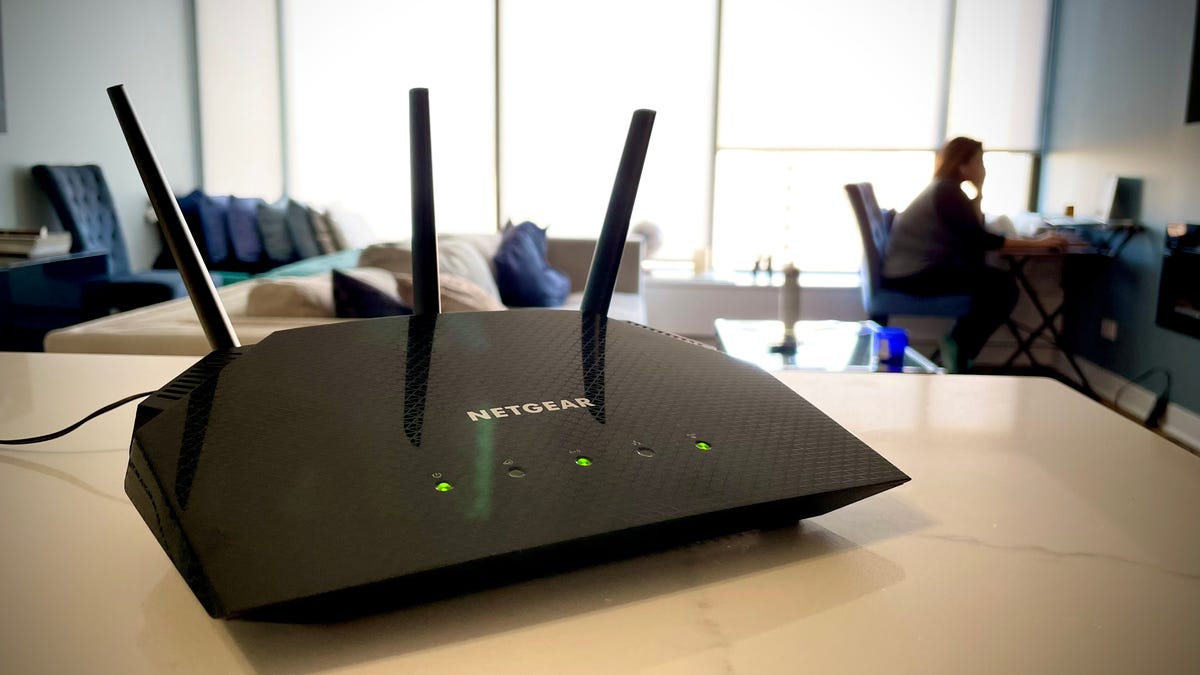 Why You Can Trust CNET
Why You Can Trust CNET Next-gen Wi-Fi smart home devices could come with over 1 kilometer of range
A new feature called Wi-Fi HaLow supports low-energy transmissions for things like sensors and security cameras -- and it promises a big boost to range.

With a promise of wall-penetrating range that exceeds 1 kilometer, the Wi-Fi Alliance announced certification this month for Wi-Fi HaLow, a new feature that supports long-range, low-energy Wi-Fi transmissions on the sub-1GHz spectrum. The feature is aimed squarely at smart home gadgets, with the number of cloud-connected devices worldwide projected to soar to more than 30 billion by 2025 -- more than twice the 13.8 billion Internet of Things devices in service today.
That's good news for smart home sensors, security cameras, and industrial or agricultural IoT gadgetry, says Wi-Fi Alliance president and CEO Edgar Figueroa -- and good news for Wi-Fi, too, especially as new standards like Amazon Sidewalk and Matter seek to muscle into relevance in the smart home category.
"Wi-Fi Certified HaLow further extends Wi-Fi's leading role in IoT to address a new range of secure and interoperable use cases that require longer range and lower power," Figueroa said in a statement. "There are growing opportunities to streamline connectivity in the growing IoT market, and Wi-Fi HaLow builds on a universally trusted Wi-Fi foundation to pave the way for emerging IoT applications to benefit homes, businesses and industries."
Locating local internet providers
Wi-Fi HaLow's claims of longer range and lower power use stem from the fact that it sends signals at frequencies below 1GHz, which is much lower than the 2.4 and 5GHz bands most home Wi-Fi networks use to bring devices online. While higher frequencies are better for moving mass amounts of data, lower frequencies offer much better range, and that makes the sub-1GHz spectrum a seemingly good fit for sensors and other devices that may need to send tiny bits of data across a Wi-Fi network at great distance.
Additionally, Wi-Fi HaLow could be a boon for battery life, with the Wi-Fi Alliance promising, "low power connectivity necessary for applications including sensors, personal wearable devices, and utility meters that require multi-year battery operation."
Locating local internet providers
"Wi-Fi HaLow adopts existing Wi-Fi protocols to deliver many of the benefits that consumers have come to expect from Wi-Fi, including multi-vendor interoperability, strong WPA3 security, easy setup and seamless integration into IP networks," the Wi-Fi Alliance adds in its press release announcing HaLow's certification.
HaLow isn't the only new wireless standard promising a big boost to range. There's also Amazon Sidewalk, a low-power IoT network that launched earlier this year and which relies upon a combination of low-energy Bluetooth and LoRa signals. In that case, devices need LoRa radios of their own in order to take advantage of the long-range connections.
With Wi-Fi HaLow, devices only need a standardized Wi-Fi chipset that supports the protocol, and those should be coming soon. Analysts note that Wi-Fi HaLow devices are already up and running in the industrial sector -- and they expect adoption to spread quickly through residential and commercial environments in 2022.
"Wi-Fi HaLow devices such as security cameras and tablets are being used in industrial environments today, and we expect devices to soon make their way to smart home environments allowing consumers to take advantage of its longer range and lower power for applications such as battery powered cameras, video baby monitors, and other smart home products," said Phil Solis, research director at IDC. "Companies have been working on Wi-Fi HaLow chipsets for years and we expect shipments to break 10 million in 2022, with adoption expanding from industrial to include smart home, smart city, and retail markets."

